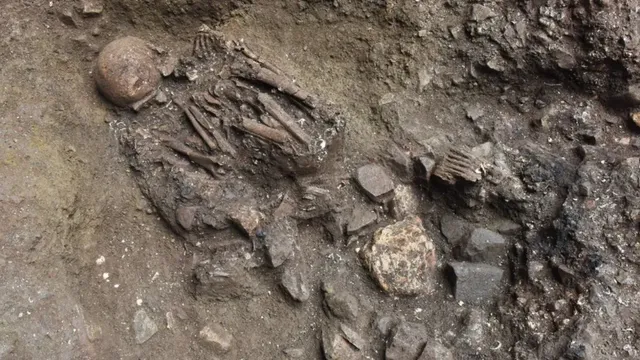- By Shivangi Sharma
- Mon, 02 Jun 2025 03:44 PM (IST)
- Source:JND
In a breakthrough study, Chinese scientists have identified a long theorised but previously unconfirmed "ghost lineage" that sheds light on the mysterious origins of populations living on the Tibetan Plateau. The discovery, made through ancient DNA analysis of a 7,100-year-old skeleton found in southwestern China's Yunnan province, helps trace the roots of Tibetans to a previously unknown human population.
The skeleton, belonging to an Early Neolithic woman, was uncovered at the Xingyi archaeological site. She lived approximately 7,100 years ago and is believed to have been a hunter-gatherer, based on isotope analysis of her diet. Her grave was located beneath all other burials at the site and was notably devoid of grave goods, suggesting she belonged to a much earlier era than others found nearby.
Genetic Evidence Of ‘Ghost Lineage’
The study, published on May 29 in the journal Science, was led by Qiaomei Fu from the Institute of Vertebrate Palaeontology and Paleoanthropology in Beijing. Her team analysed 127 ancient genomes from Yunnan, dating from 1,400 to 7,150 years ago. The woman's DNA revealed a previously unknown human lineage that diverged from other Asian populations at least 40,000 years ago, one that scientists had long theorised but never confirmed.
Modern Tibetan populations derive about 80 per cent of their ancestry from northern Chinese groups dating back 9,500 to 4,000 years ago. The origin of the remaining 20 per cent has remained elusive until now. This study provides the first direct genetic evidence of that missing component, long referred to as “ghost ancestry” by anthropologists.
“This study not only fills a critical gap in the genetic data of prehistoric populations in East and Southeast Asia but also identifies one of the Tibetan Plateau’s ‘ghost ancestors’ for the first time from a genetic perspective,” the researchers stated.
ALSO READ: Will India Retaliate Again? US Rejects WTO Tariff Notice, Nation Considers Counter Taxes To Hit Back
Prehistoric Human Diversity
Fu emphasised that the woman, referred to as Xingyi_EN in the study, is the only known representative of her kind so far. “There likely were more of her kind, but they just haven’t been sampled yet,” she noted. The researchers caution that while her genome offers key insights, it provides only a limited view of the broader population she belonged to. The findings provide a vital clue into how ancient populations migrated, adapted, and contributed to the genetic makeup of modern Tibetans.

